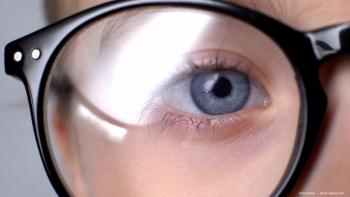
Retina 2008: The year of watchful waiting
Retinal specialists seemed to hold their collective breaths in 2008 in anticipation of the results of a number of ongoing trials of drugs for various retinal pathologies. Medical retina and the anti-vascular endothelial growth factor therapies were center stage again this year. Some of the highlights include bevacizumab (Avastin, Genentech) for retinopathy of prematurity, sustained-release ciliary neurotropic factor for dry age-related macular degeneration, anti-complement drugs, and the results of the Diabetic Retinopathy Clinical Research study.
Key Points
The year 2008 seems to have been one of watchful waiting in anticipation of the results of several ongoing trials of drugs for various retinal pathologies. Medical retina and the anti-vascular endothelial growth factor (VEGF) therapies were center stage again this year. Some of the highlights include bevacizumab (Avastin, Genentech) for retinopathy of prematurity (ROP), sustained-release ciliary neurotropic factor for dry age-related macular degeneration (AMD), anti-complement drugs, and the results of the Diabetic Retinopathy Clinical Research (DRCR) study.
AMD
Earlier in the year, Genentech reversed its decision to disallow bevacizumab from being compounded in pharmacies for treatment of patients with wet AMD.
This turnaround especially is important considering that bevacizumab is being used to treat so many retinal pathologies, according to Philip Rosenfeld, MD, PhD, associate professor of ophthalmology, Bascom Palmer Eye Institute, University of Miami Miller School of Medicine.
The Complications of Age-Related Macular Degeneration Prevention Trial, a National Eye Institute-sponsored study, began enrolling patients in February 2008 with the goals of assessing the safety and efficacy of bevacizumab or ranibizumab and determining the dosing frequencies of the two drugs. The study still is recruiting patients and preliminary results are not available yet, Dr. Fekrat said.
"Most retina specialists are eagerly awaiting the results because of the great difference in the cost of the two drugs," she said.
In other research, a study sponsored by Alcon (Anecortave Acetate [Retaane] Risk Reduction study) of the effect of this agent on preventing the development of AMD in the fellow eye of an eye with wet AMD has been closed, according to Dr. Fekrat, because the drug was shown to be ineffective.
Dr. Rosenfeld added that investigators hope to glean some useful data about the natural history portion of the research.
A study recently reported a mutation in the toll-like receptor 3 gene in geographic atrophy and raised the question of whether small interfering RNA actually increases the progression of geographic atrophy, according to Dr. Rosenfeld. The manuscript was published in the New England Journal of Medicine (2008;359:1456-1463).
Radiation therapy is being revived as another option for wet AMD, he said. The NeoVista Cabernet trial is ongoing; intraocular radiation is administered once intraoperatively and then with anti-VEGF drugs. Of the 34 patients in the phase II study, eight patients received 15-Gy and 26 patients received 24-Gy doses of radiation. Five of the 34 subjects had a vision loss of more than three lines.
Generally, however, the investigators reported that the subjects had a good response to the treatment. The mean change in visual acuity after 1 year was loss of one letter in the group that was treated with the 15-Gy dose. In the group that received the higher dose, the mean change was an increase of 4.4 letters.
In September 2008, Neurotech received fast-track status from the FDA for NT-501 designed to treat dry AMD and retinitis pigmentosa. The decision by the FDA allows for more rapid clinical development of a long-term release formulation of ciliary neurotrophic factor, which is released into the vitreous from an implant using Encapsulated Cell Technology, Dr. Rosenfeld said.
The 1-year results are expected to be reported during the first quarter of 2009. The device has been shown to achieve 18-month delivery of the therapeutic agent in the vitreous cavity.
A topical treatment for geographic atrophy in dry AMD (OT-551, Othera) also is undergoing testing, and the results should be released in May 2009.
Another area that is causing excitement among retina specialists involves the complement inhibitors, according to Dr. Rosenfeld, "because of the overwhelming genetic evidence that complement genes play a role in AMD.
Newsletter
Don’t miss out—get Ophthalmology Times updates on the latest clinical advancements and expert interviews, straight to your inbox.



















































.png)


